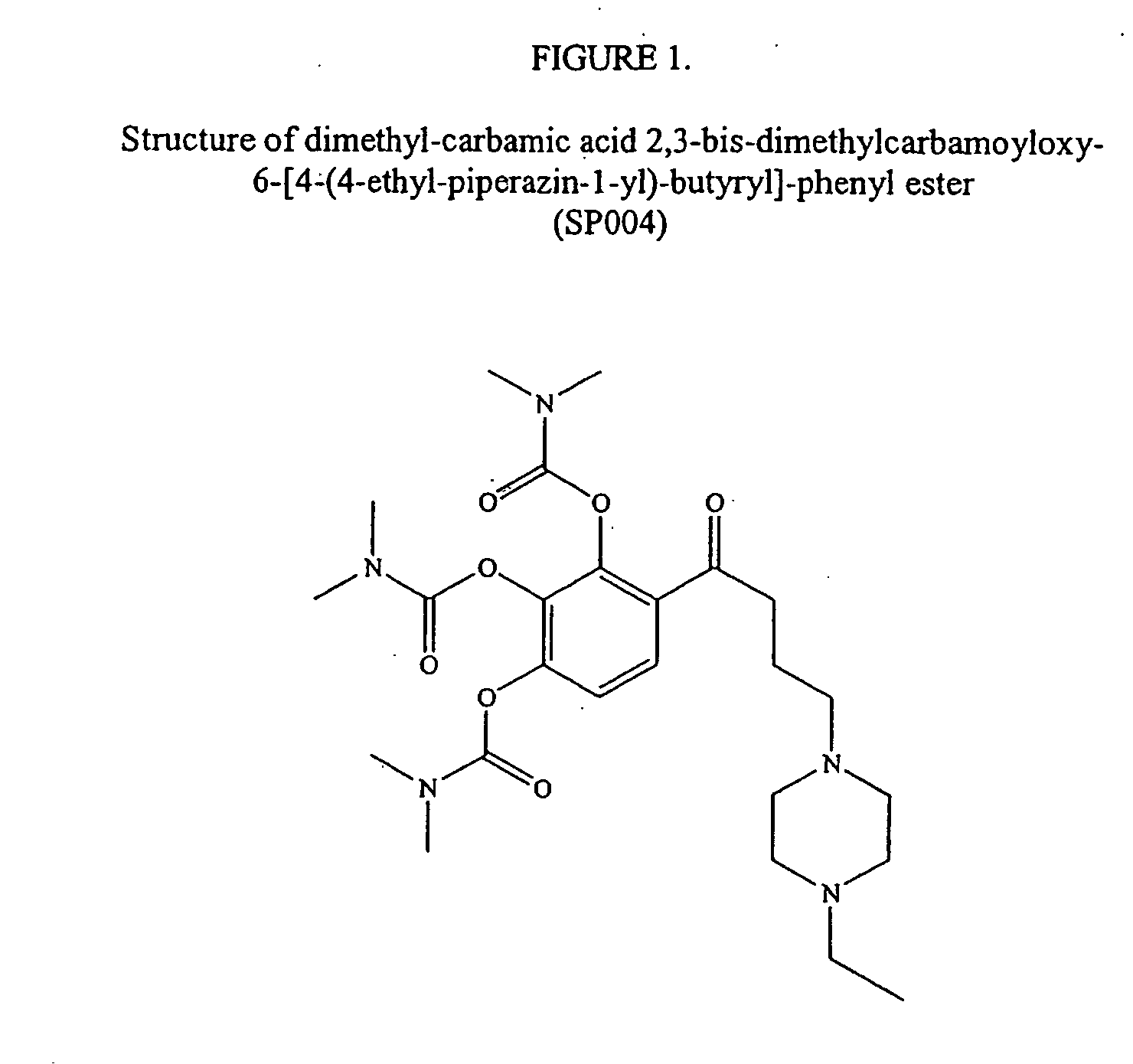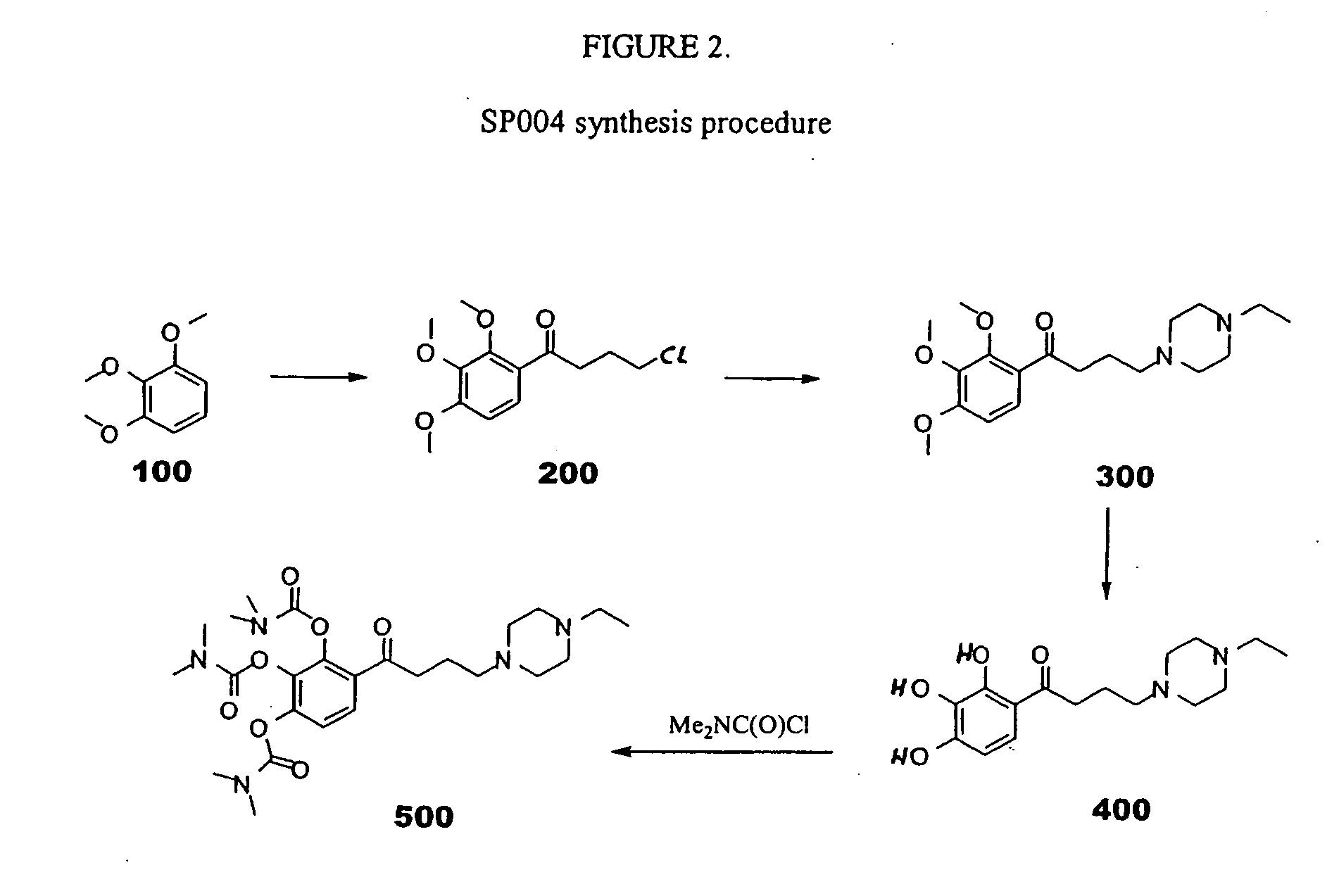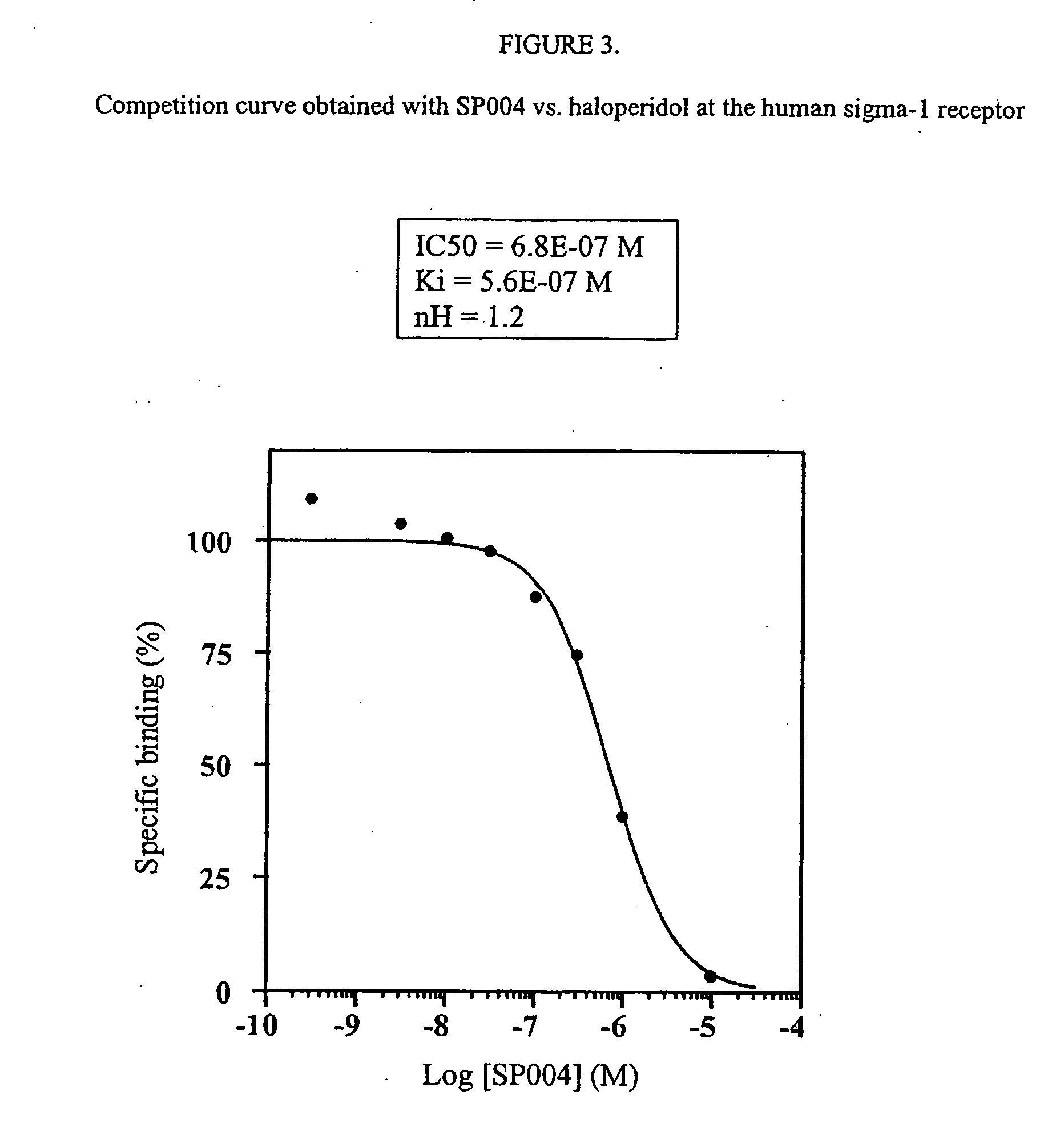Sigma-1 receptor ligand with acetylcholinesterase
a technology of acetylcholinesterase and sigma-1 receptor, which is applied in the direction of anti-noxious agents, drug compositions, organic chemistry, etc., can solve the problems of shortened life span, shortened life span, and inability to fully absorb cholinergic signals, so as to prevent or reduce -amyloid peptide induced neurotoxicity, improve cholinergic transmission, and prevent or treat neurodegenerative diseases and disorders.
- Summary
- Abstract
- Description
- Claims
- Application Information
AI Technical Summary
Benefits of technology
Problems solved by technology
Method used
Image
Examples
example 1
Synthesis of SP004
[0070] As depicted in FIG. 2, 10 grams (0.059 mol) 2,3,4-trimethoxy-phenyl (“100” in FIG. 2) was added to a suspension of aluminum chloride (35.5 g, 0.26 mol) in carbon disulfide. While the temperature was maintained at about 10° C., γ-chlorobutyryl chloride (14.7 g, 0.1 mol) was added. After the addition was completed, the stirring was continued for two hours at room temperature. The reaction mixture was poured onto ice and extracted with dichloromethane. The organic layer was separated, washed with water, and dried with MgSO4. The solution was concentrated under reduced pressure. The residue was used in the next step without further purification.
[0071] In the next step, the compound produced above, 4-chloro-1-(2,3,4-trimethoxy-phenyl)-butan-1-one (“200” in FIG. 2) (7 g, 0.026 mol) and N-ethylpiperazine (5.8 g, 0.051 mol) were heated for seven hours at 100° C. After evaporation of the unreacted N-ethylpiperazine, the residue was chromatographed on silica gel.
[...
example 2
SP004 Binding Assay
[0074] Different binding studies were performed with the following SP004 concentrations:
3E-10, 3E-9, 1E-8, 3E-8, 1E-7, 3E-7, 1E-6, 1E-5 M.
Materials and Methods
[0075] Central imidazoline-2 receptor (I2). Central I2 receptors extracted from rat cortex were used for this experiment. Increasing concentrations of SP004 were incubated for 30 minutes at 22° C. with 2 nM of the specific I2 receptor ligand [3H]-idazoxan. Brown et al., Brit. J. Pharmacol., 99:803-809 (1990).
[0076] Muscarinic receptor (non-specific). Muscarinic receptors extracted from rat cortex were used for this experiment. Increasing concentrations of SP004 were incubated for 120 minutes at 22° C. with 0.05 nM of the muscarinic ligand [3H]-QNB. Richards, Brit. J. Pharmacol., 99:753-761(1990).
[0077] Neuronal nicotinic α-BGTX-insensitive receptor. Neuronal nicotinic α-BGTX-insensitive receptors extracted from rat cortex were used for this experiment. Increasing concentrations of SP004 were incubat...
example 3
Novel Sigma-1 Receptor Ligand with Acetylcholinesterase Inhibition Properties: A Nerve Agent Antidote
[0089] In modern war, protecting soldiers against any kind of threat and preserving their ability to fight has become a major concern of armies, as they have to face more and more deadly weapons on, and off, the battlefield. Nerve gas, like sarin, soman or Vx, is one of these deadly weapons. In addition to being deadly, nerve gas is easy to produce, can be made in large quantities and is easy to use. As such, nerve gas also constitutes an ideal weapon for terrorist organizations, as demonstrated by the attacks against the metro of Tokyo with sarin in the 1980's. Unprotected contact with nerve gas, so-called weapons of mass destruction, leads to certain death if appropriate treatment is not administered very quickly.
[0090] Sarin, soman and Vx all irreversibly inhibit the enzyme acetylcholinesterase (AchE), and as such, they all belong to the same family of neurotoxic gas. AchE degr...
PUM
 Login to View More
Login to View More Abstract
Description
Claims
Application Information
 Login to View More
Login to View More - R&D
- Intellectual Property
- Life Sciences
- Materials
- Tech Scout
- Unparalleled Data Quality
- Higher Quality Content
- 60% Fewer Hallucinations
Browse by: Latest US Patents, China's latest patents, Technical Efficacy Thesaurus, Application Domain, Technology Topic, Popular Technical Reports.
© 2025 PatSnap. All rights reserved.Legal|Privacy policy|Modern Slavery Act Transparency Statement|Sitemap|About US| Contact US: help@patsnap.com



